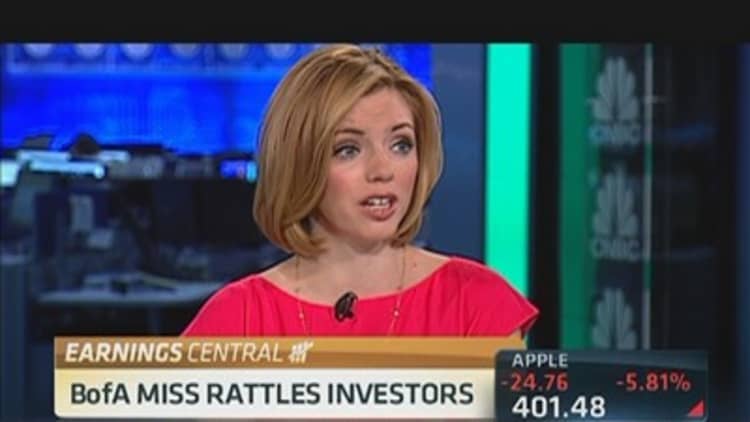The two-day pullback in stocks this week put the S&P 500 below the record levels of 2007's housing bubble and tech bubble of 2000, raising concern about a dreaded "triple-top" in the market that could keep a lid on any gains for the foreseeable future.
The S&P 500 hit a high of 1,552 in March 2000. After a biting recession, interest rates slashed to the basement by the Fed and then the biggest boom in housing ever, it recovered to a high of 1,576 in October 2007. Rinse and repeat and we find the S&P 500 at 1,541 today.
To the delight of many technical analysts, it broke this triple top last week. Unfortunately, it traded above the old record for just four days before poor economic data and earnings results this week dragged it back down into this 13-year range.

"I think history repeats," said Guy Adami, managing director of StockMonster.com. "Listen to the punditry now saying, 'no contagion' and 'buy the dips.' It's the same exact thing you heard in 2007."
"The Fed is powerful, but I think the market rally has masked a lot of bad underlying data," added Adami.
The bears argue that we just keep blowing bubbles instead of taking our medicine and laying the framework for a lasting, job-creating recovery based on innovation, education and government reform. Until then, the resistance spanning two decades holds.
First it was the internet, then it was housing and now Fed Chief Bernanke — through unprecedented monetary stimulus — creating a money bubble, forcing asset prices up by opening the liquidity dam and punishing anyone loathe to take risks.
But eerily, it wasn't enough to push through these levels. For technical analysts, resistance is defined as previous highs where a ton of sellers come in so they can break even. For those who bought near the top of these epic bubbles, this week gave them another chance.
Thursday, weekly jobless claims came in higher than expected, followed by misses from the Philadelphia Fed Index and Leading Indicators. Bank of America cratered after earnings failed to match analysts' expectations.
(Watch: Bank of America Miss Rattles Investors)
"During the 2006-2007 period, the global economy was significantly stronger and the U.S. housing boom was in full swing," said Brian Kelly of Shelter Harbor Capital, who is short the S&P 500. "Why would below trend economic growth produce more jobs?"
The other missing ingredient is the embracement of this rally by the public, a phenomenon typically seen in the later years of a bull market. It's been four years since the S&P 500 hit a post-Lehman Brothers collapse low and investors have barely put any money back into equity mutual funds.
Look no further than the latest earnings report from TD Ameritrade this week for the state of retail enthusiasm. Trading activity for the online brokerage fell 2.4 percent from a year ago even as the S&P 500 jumped during the first quarter.
(Read More: It's Time to Play Defense: Gina Martin Adams)
But some say that this distaste for the rally is the very reason why it can keep going.
"This is the most hated rally I've seen in 20 years," said Michael Murphy of Rosecliff Capital. "When people finally start to buy and return to equities, the market will surge."
For the best market insight, catch "Fast Money" at 5 p.m. ET, and the "Halftime Report" at 12 noon ET each weekday on CNBC. Follow @CNBCMelloy on Twitter.



